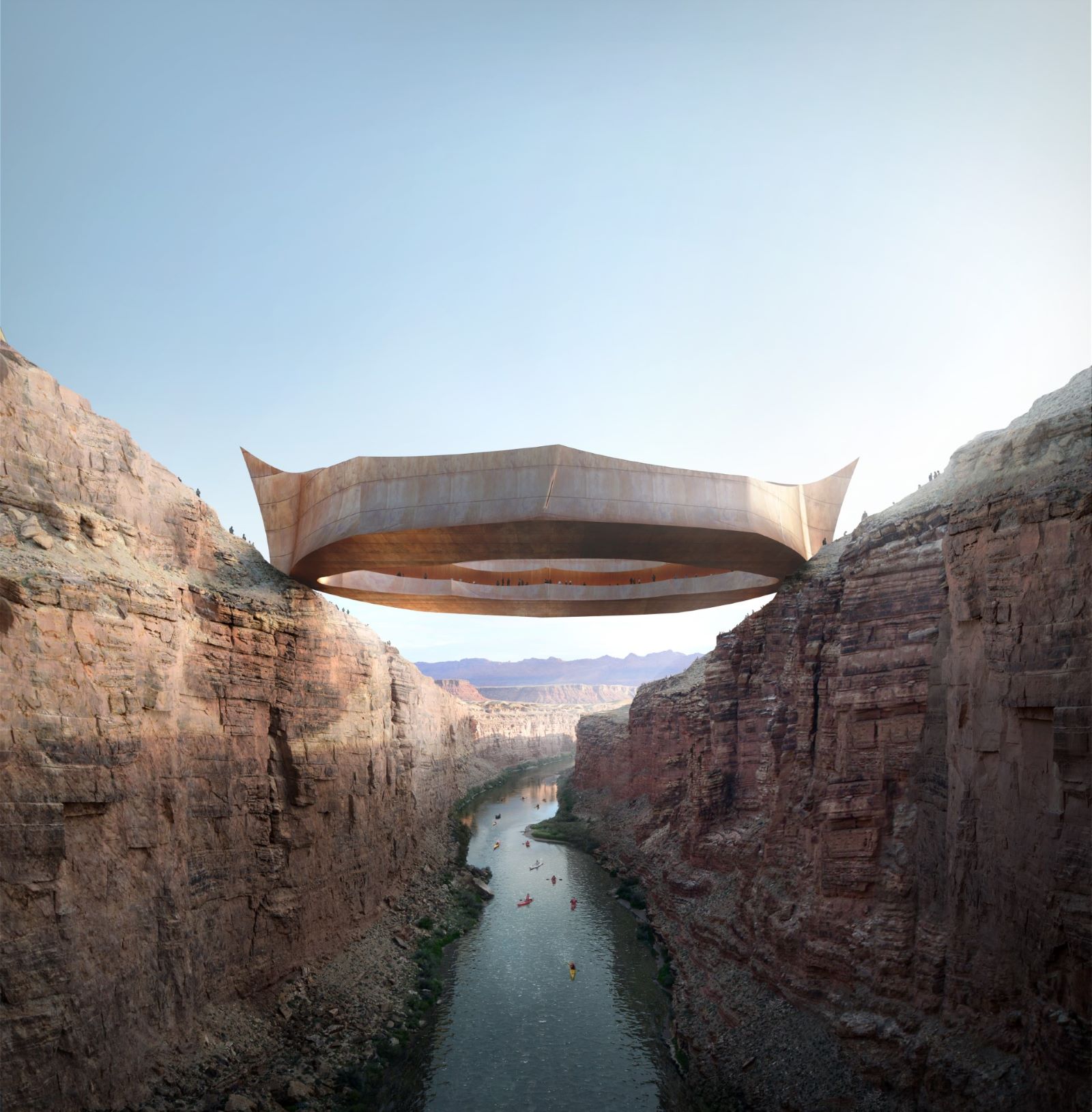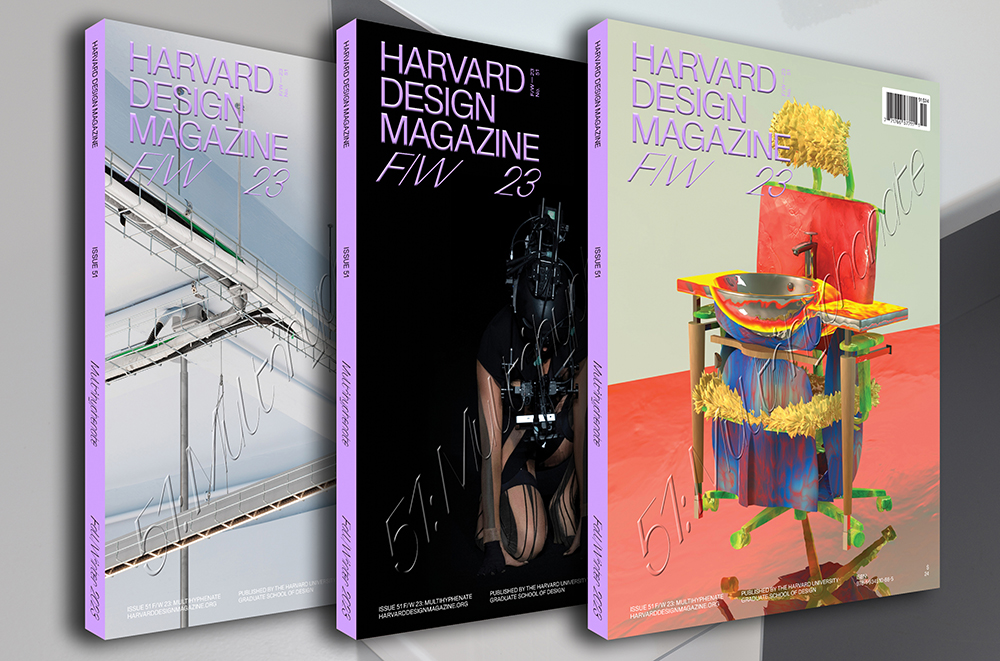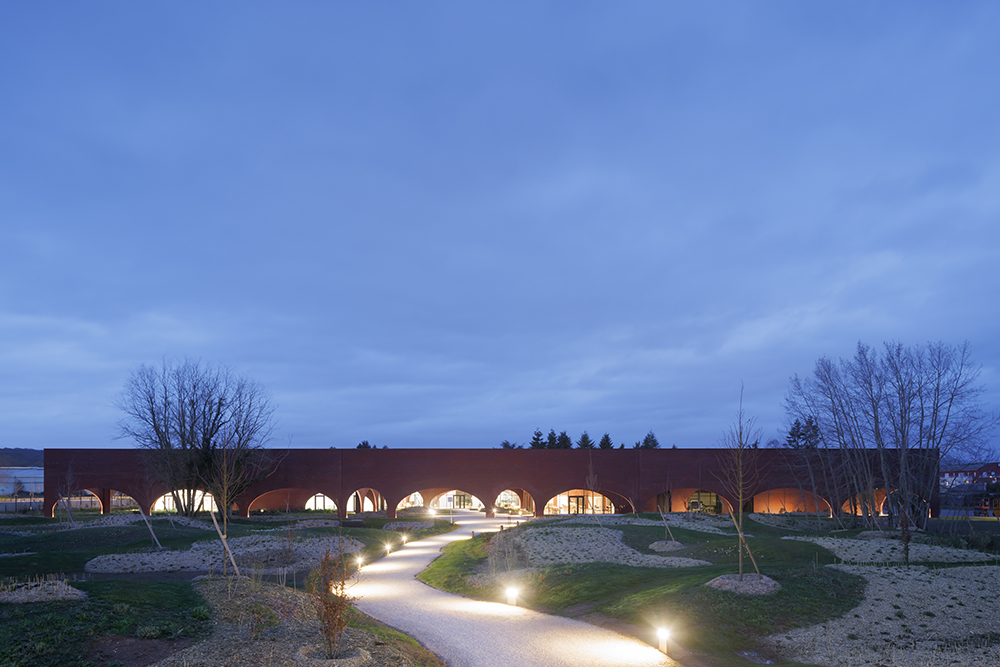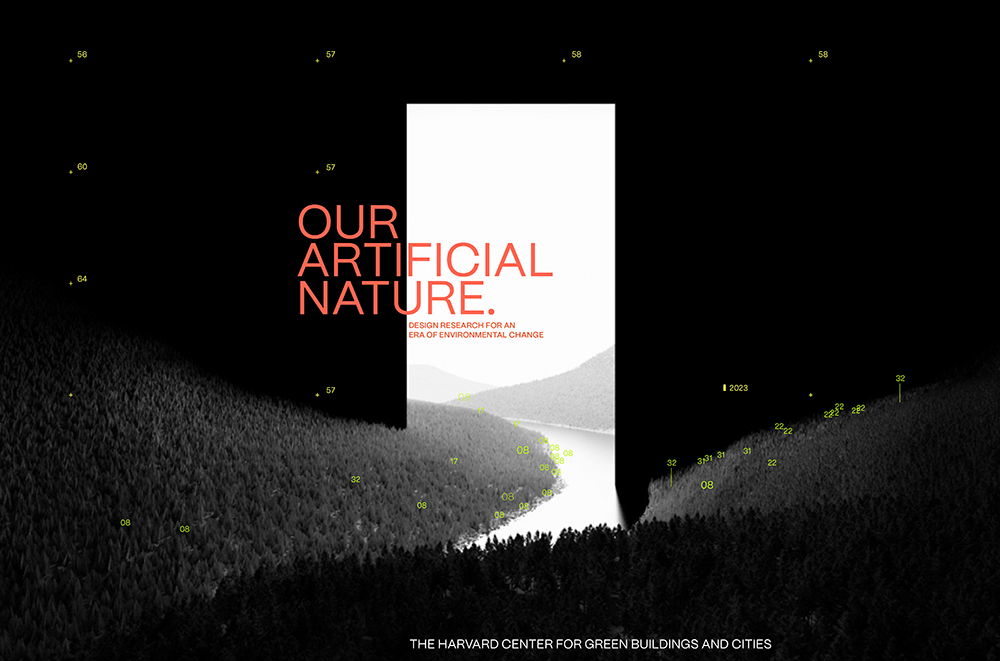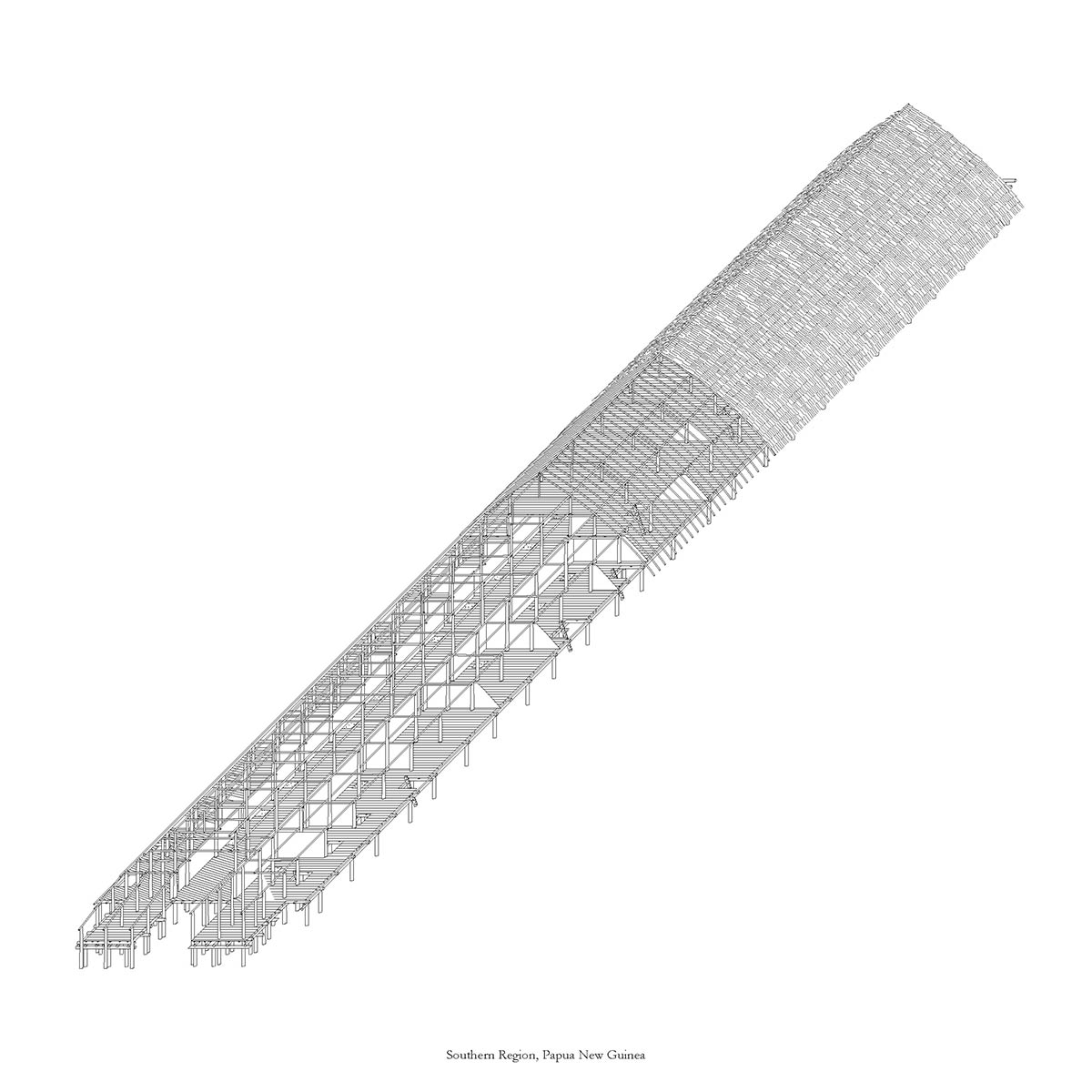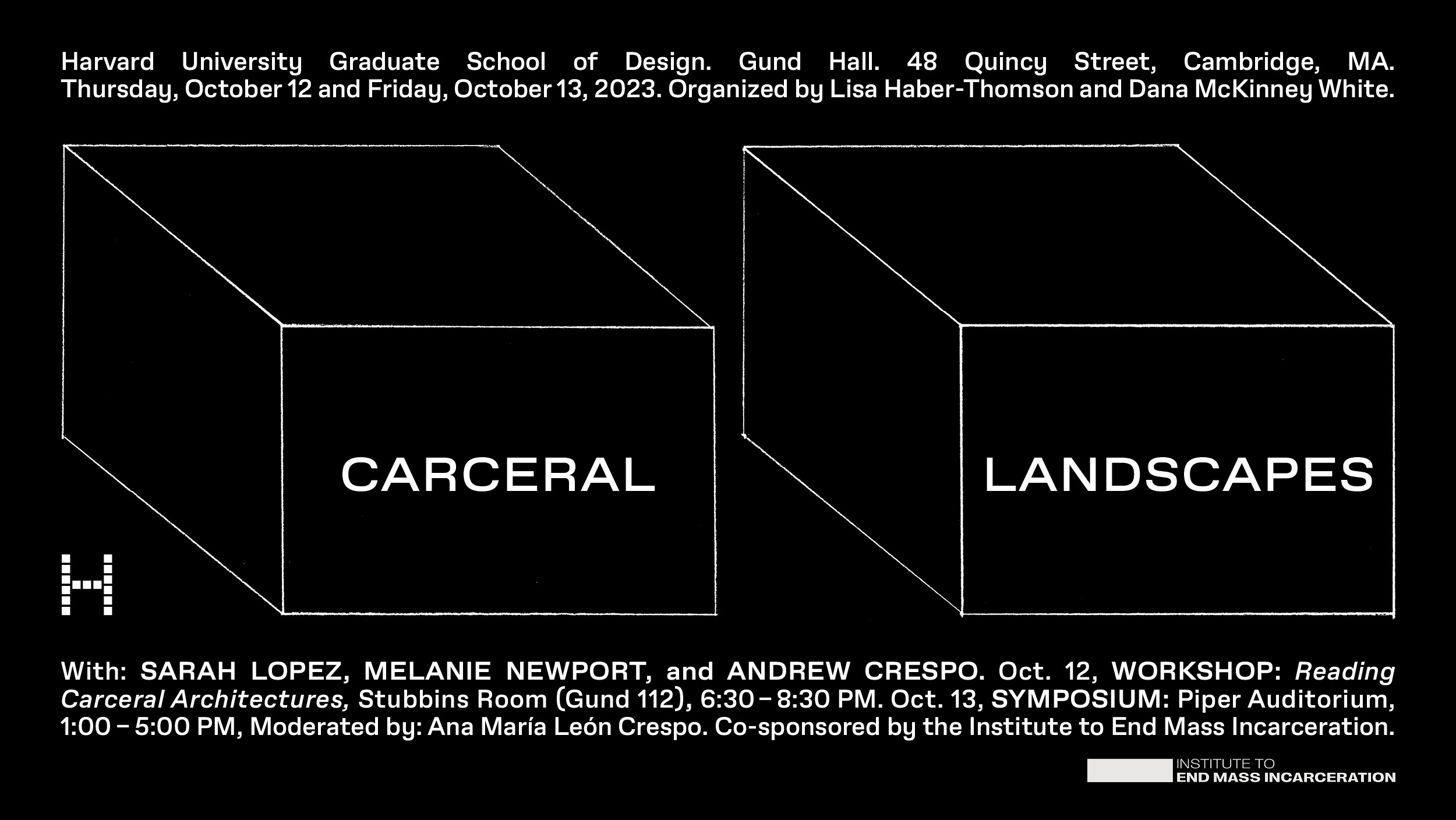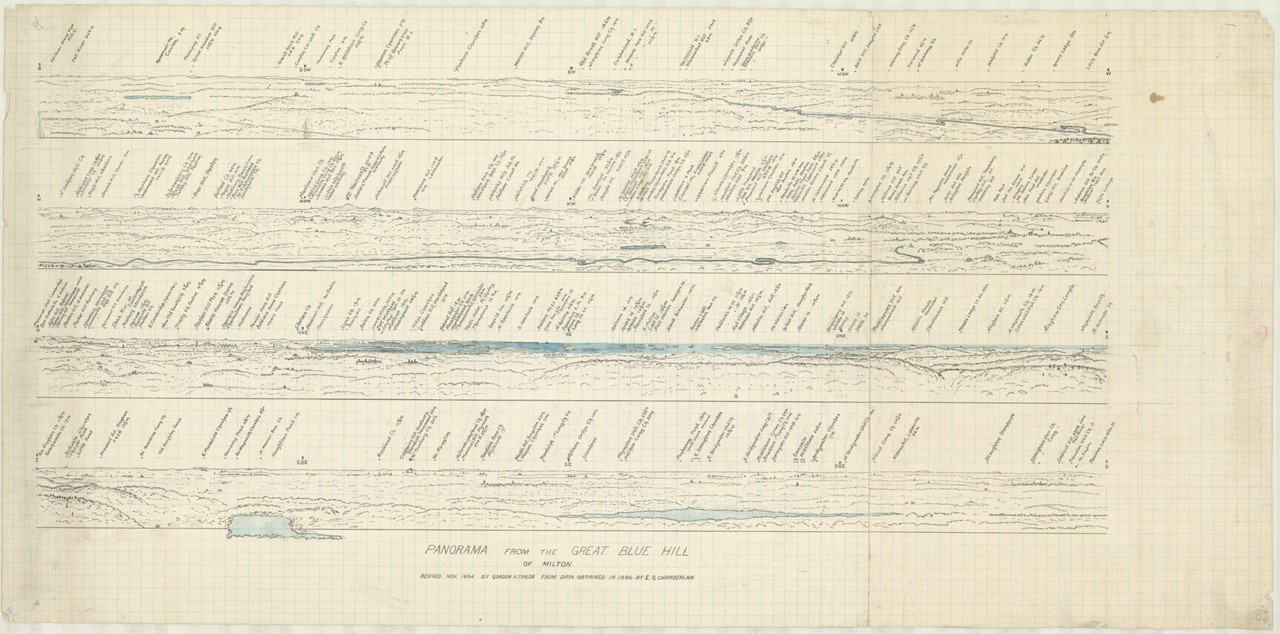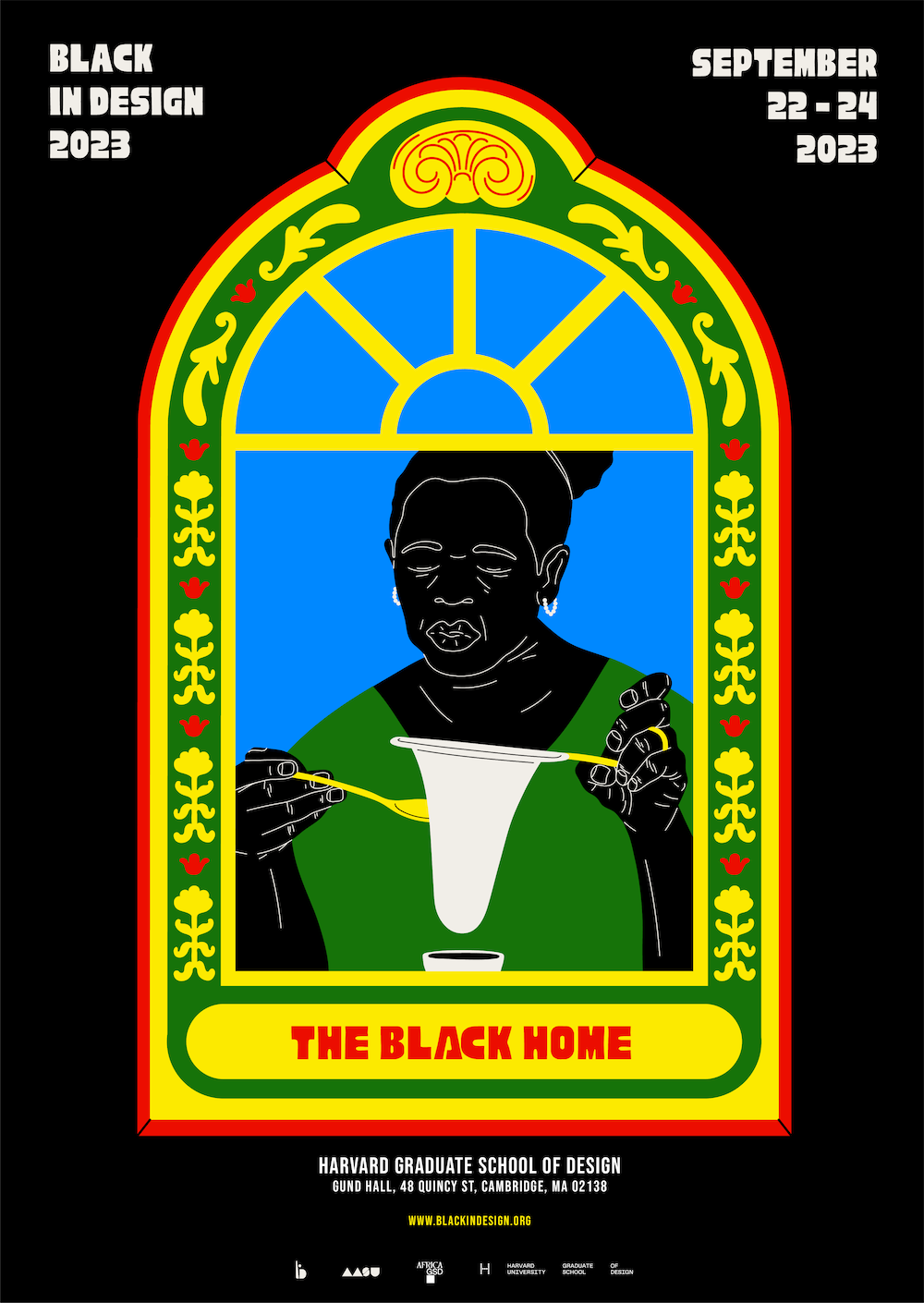The State of Housing Design 2023
Event Description
What is the state of housing design in the US? In particular, how are architects of new single- and multi-family housing responding to issues such as the warming climate, the affordability crisis, increasing regulations and construction costs, and the demand for new unit types that better reflect today’s demographic realities? These questions will be the focus of a half-day event marking the release of The State of Housing Design 2023 , a new book that examines themes in housing design, explored through over 100 recent buildings in the US.
The event will feature panels with the book’s editors, authors, practitioners, journalists, academics, and others, including:
Nate Berg, Staff Writer, Fast Company
Elizabeth Christoforetti, Assistant Professor in Practice of Architecture, GSD; Founding Principal, Supernormal
Daniel D’Oca, Associate Professor in Practice of Urban Planning, GSD; Principal and Co-Founder, Interboro Partners
Roy Decker, FAIA, Principal, Duvall Decker
Jenny French, Assistant Professor in Practice of Architecture, GSD; Co-Founder, French 2D
Alexandra Gauzza, AIA, LEED AP BD + C, Principal/Studio Director, ISA
Chris Herbert, Managing Director, Harvard Joint Center for Housing Studies
Ken Johnson, Partner, Michael Hsu Office of Architecture
Anna Kodé, Real Estate Reporter, The New York Times
Tim Love, Lecturer in Real Estate, GSD; Founding Principal, Utile Architecture and Planning
Sam Naylor, Project Architect, Utile; Druker Fellow, GSD
Marc Norman, Associate Dean, NYU Schack Institute of Real Estate
Chandra Robinson, Principal, LEVER Architecture
Inga Saffron, Architecture Critic, The Philadelphia Inquirer
Timothy A. Schuler, Contributing Editor, Landscape Architecture Magazine
Patrick Sisson, Journalist, Bloomberg CityLab, The New York Times, and others
Sarah Whiting, Dean and Josep Lluís Sert Professor of Architecture, GSD; Design Principal and Co-Founder, WW Architecture
Stephen Zacks, Journalist and Critic, Dwell, Architects’s Newspaper, and others
Mimi Zeiger, Critic and Editor, The Los Angeles Times, Architectural Review, and others
This hybrid event will be held in person and online; register here to attend in person . No registration is needed to watch online.
Pre-order The State of Housing Design 2023 through Harvard University Press.
Michele De Lucchi, “Earth Stations – Future Sharing Architectures”
A recording of this event is available with audio description .
Event Description
What can we as architects do for the world to come? We can use eco-friendly materials, and we can adopt the most sophisticated technologies, but if we do not get used to thinking with a sustainability mindset, building the greenest house in the world will not make the slightest difference, because, ultimately, we will continue to behave like irresponsible consumers. Consequently, we must intervene with a new way of thinking, one born today for the world of tomorrow. By attending to the unique qualities of spaces, we can foster mutually beneficial behavior that enables people to get along well together. This is why my studio, AMDL CIRCLE, and I have created Earth Stations, visionary architectures developed to cultivate human relationships.
Speaker
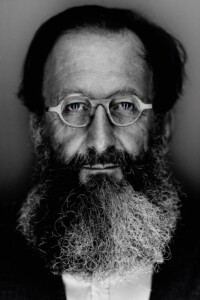
Architect Michele De Lucchi has had a long and distinguished career. He was a prominent figure in movements like Alchimia and Memphis. He has designed furniture for the most well-known Italian and European companies, including Olivetti, where he spent 14 years as Director of Design (1988-2002). He has realized architectural projects in Italy and abroad, including cultural, corporate, industrial, and residential buildings. For Deutsche Bank, Deutsche Bundesbahn, Enel, Poste Italiane, Hera, Intesa Sanpaolo, UniCredit, and at other Italian and foreign banks he has designed working environments and built corporate images. He has developed essential hospitality projects in Georgia, China, Japan, and various parts of Italy. He has planned buildings for museums such as the home of the Triennale di Milano, the Palazzo delle Esposizioni in Rome, the Neues Museum in Berlin, and the Gallerie d’Italia.
In 2000 he was appointed Officer of the Italian Republic by President Ciampi. In 2001 he was nominated Professor at the IUAV in Venice. In 2006 he received an Honorary Doctorate from Kingston University. In 2008 he was nominated Professor at the Design Faculty of the Politecnico of Milan and Member of the Accademia Nazionale di San Luca in Rome. During 2018 Michele De Lucchi was Guest Editor of the new“Domus” magazine. In 2022 he was honoured with the Compasso d’Oro Career Award.
Michele De Lucchi is founder and member of AMDL CIRCLE.
MULTIHYPHENATE: Sean Canty, Zeina Koreitem, and John May introduce Harvard Design Magazine #51
A recording of this event is available with audio description
.
Event Description
Sean Canty, Zeina Koreitem, and John May will discuss the ideas and concerns that animated their editorial vision for Harvard Design Magazine #51: Multihyphenate
, and its relationship to their co-curated exhibition, Multihyphenation, on view in the Druker Design Gallery (August 30 – October 9, 2023). While launched in tandem with one another, the magazine and the exhibition aim to explore the notion of multihyphenation in various fields of cultural production from different vantage points. Their conversation will highlight the similarities and differences between these two formats—one printed, the other experiential—as well as the possible misconceptions that might arise from having brought multihyphenation, past and present, into sharp focus.
“In a general sense, multihyphenation simply means a conscious diversification of one’s productive output within the realms of intellectual and material culture. In practice, the situation is far more complex. When done exceptionally well, multihyphenation involves a continual and coordinated distribution of one’s mental and manual labor across various formats, forums, and material systems. It demands a patient and careful choreographing of the tangencies, adjacencies, sympathies, tensions, and divisions within an entire “body of work”1
(past, present, and imagined future)—this, by means of an incessant admixture of speculation, experimentation, production, and reflection. Multihyphenation, knowingly and intentionally, distributes productive energy according to the carrying capacities of distinct media formats: spoken, written, imaged, constructed, performed, etc. It is, in other words, a lived and living media theory. “
– John May, “How to Disintegrate Completely (…but Always be Found),” Harvard Design Magazine #51
Speakers
Sean Canty is assistant professor of architecture at the Harvard Graduate School of Design. In 2017, he founded Studio Sean Canty
, an architectural practice that introduces novel geometries and materials to enrich the spaces of everyday life. He also cofounded Office III, an architectural collective. Canty received a fellowship from the Richard Rogers Fellowship and was a finalist in the Civitella Ranieri Architecture Prize competition, among others. His work has been exhibited at MoMA and A83 Gallery, New York. He has held teaching appointments at the Cooper Union for the Advancement of Science and Art, New York; University of California, Berkeley; and California College of the Arts. Canty received an MArch from the Harvard Graduate School of Design and a BArch from California College of the Arts. He previously worked in the offices of Architecture Research Office and IwamotoScott Architecture.
Zeina Koreitem is founding partner with John May of MILLIØNS
, a Los Angeles–based architecture practice. She is design faculty at the Southern California Institute of Architecture (SCI-Arc) in Los Angeles. Koreitem previously held positions at the Harvard Graduate School of Design, the University of Toronto, and the University of Southern California School of Architecture. In addition, Koreitem previously worked for the offices of Dominique Perrault Architecture in Paris and RCR Arquitectes in Olot, Spain.
John May is founding partner with Zeina Koreitem of MILLIØNS
, a Los Angeles–based architecture practice. He is associate professor of architecture at the Harvard Graduate School of Design, and author of Signal. Image. Architecture: Everything is Already an Image
(Columbia University Press, 2019).
Angela D. Brooks, “No Place Like Home”
A recording of this event is available with audio description.
Event Description
In her lecture “No Place Like Home,” Angela D. Brooks will discuss insights from her career advocating housing justice and helping communities meet the needs of residents.
Speaker

Angela D. Brooks is the Director of the Illinois office of the Corporation for Supportive Housing and the President of the American Planning Association . She currently serves on the Chicago Board of Zoning Appeals, the Illinois Affordable Housing Advisory Commission, and is co-chair of the national Housing Supply Accelerator, helping communities meet the housing needs of residents. Brooks is a native of Seattle and a graduate of Jackson State University, where she received her Bachelor of Arts in Urban Studies, and the University of New Orleans, where she received a Master of Urban and Regional Planning. She is a life member of Alpha Kappa Alpha Sorority, Inc., Jackson State University Alumni Association, and The Links, Incorporated.
Lina Ghotmeh, “Living in Symbiosis – an Archeology of the Future”
A recording of this event is available with audio description .
Event Description
More than a method of work, “archeology of the future” is a true approach to the built landscape established by Lina Ghotmeh throughout her practice. Founder of Lina Ghotmeh—Architecture, Paris-based Lina Ghotmeh’s designs develop thorough historical research, emerging as exquisite interventions that enliven our memories and senses. In this “Archeology of the future”, every work of architecture is drawn from its place and the traces of its past. A link is drawn between time, memory, and space, establishing an anchored place and drawing a strong tie between the Humane and Nature. The past meets the future as histories are unearthed and memories excavated to enable questioning, innovation, and a more sustainable architecture. Bearing a “humanist” approach, Lina Ghotmeh’s practice emphasizes the power of craft and that of the hand in the making of Architecture. Through this, the built embraces the traditions of its localities, while uplifting the subjective experience and the collective memory of those it recalls. Projects such as “Stone Garden” in Beirut, Lebanon, anchor the city’s eventful past into the present by calling forward its ruins, histories of conflicts, and scarred landscape. The first low-carbon, energy-positive building delivered in France, the Workshops for Hermès live in complete symbiosis with their landscape while bridging craft, beauty, and today’s high technicity. “À Table”, the 22nd Serpentine Pavilion, is drawn in continuity to Lina Ghotmeh’s ethos. Rising as a wooden structure in keeping with the natural surroundings, it is built predominantly from bio-sourced and low-carbon materials. The Pavilion continues her focus on sustainability and designing spaces that are conceived in dialogue with the natural environment that surrounds them.
Speaker
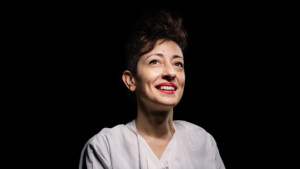
Architect Lina Ghotmeh is the founder of the Paris-based studio Lina Ghotmeh – Architecture. Evoking her past life in Beirut, she sees her practice as an “archaeology of the future”: each project evolves from her research, in symbiosis with nature, as an expression of the essence of the raw material from which it is crafted. Her work includes the Estonian National Museum (designed in partnership Dorell.Ghotmeh.Tane); the “Stone Garden” tower in Beirut, winner of the Dezeen 2021 project of the Year award and distinguished for its hand-carved surface; “Réalimenter Masséna”, her winning design in response to a call for innovative projects by the City of Paris; and the new Ateliers Hermès, a passive, low-carbon building under construction in Normandy.
Lina Ghotmeh was the Fall 2021 “Louis I Khan” Visiting Professor of Architectural Design at the Yale School of Architecture. She held the 2021-22 Frank Gehry International Visiting Chair in Architectural Design at the University of Toronto, and is a professor and member of the International Academy of Architecture. In 2020, she received the Schelling Architecture Award and the Tamayouz Woman of Outstanding Achievement award. She is a winner of the Prix Cardin (2019, awarded by the Académie des Beaux-Arts, France), the Prix Dejean (2016, from the Académie d’Architecture), and the Grand Prix AFEX (2016). In 2022, Lina Ghotmeh was appointed as the Architect of the 22nd Serpentine Pavilion in London. The pavilion opened in June 2023.
Her work has been exhibited at the MAXXI in Rome, at the Cooper-Hewitt, the Smithsonian Design Museum in New York, the 17th Venice Architecture Biennale, the Building Centre at the V&A in London, and the Danish Architecture Centre in Copenhagen.
Our Artificial Nature: Perspectives on Design for an Era of Environmental Change
A recording of this event is available with audio description .
Event Description
On the occasion of the opening of the exhibition Our Artificial Nature, featuring Harvard Center for Green Buildings and Cities core and affiliated research faculty, the GSD hosts a candid dialogue on the trajectory of design research and practice in response to environmental change.
Carson Chan, curator of the concurrent MoMA exhibition Emerging Ecologies: Architecture and the Rise of Environmentalism , will engage GSD faculty members Elizabeth Christoforetti, Grace La, and Antoine Picon in a conversation about past design speculations, current research, and practice futures.
The conversation will address the cultural, social, and technological processes emerging within design discourse that aim to address ecological imperatives. The event will call attention to the idea that design practice is the creation of the artificial, as well as the imagination of our constructed environment in a moment when our designed and natural worlds are fused. Both the event and exhibition aim to situate current research within a history of design for environmental change, framing new paradigms for environmental design.
This event is part of ArtsThursdays , a university-wide initiative supported by Harvard University Committee on the Arts (HUCA).
Speakers
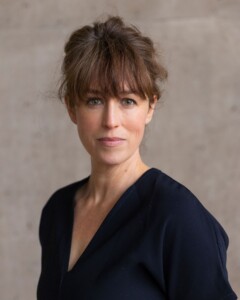
Elizabeth Bowie Christoforetti is an Assistant Professor in Practice of Architecture at the GSD and Design Director of Supernormal.
Elizabeth’s teaching and research focus on emerging modes of design practice in the built environment. Her work at the GSD explores design methods, theories, and the technological building blocks that enable design practice to better confront the imperatives of our time, such as artificial intelligence and market-driven urbanism. Her research group within the Laboratory for Design Technologies aims to uncover the potentials for scalable systems of design by daylighting, operating upon, and designing new socio-technical systems–design that is dependent upon a combination of social and technological processes, and collaboration between them.
Elizabeth directs Supernormal, a design studio based in Cambridge, MA. She founded Supernormal to create meaningful and practical change through the intersection of architecture, urbanism, technology, and contemporary culture. Elizabeth directs Supernormal as an engaged design practice that meets the world exactly as it is, and with a glass that is half full.
Her design practice, research, and teaching explore the cultural implications of large data sets, human-machine collaboration, and scalable systems of design. Elizabeth’s work joins a perspective of radical pragmatism with a deep value for the potential of design imagination.
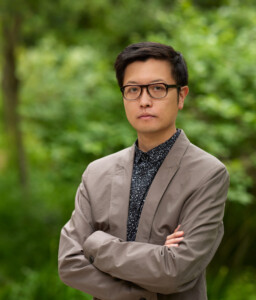
Carson Chan is the inaugural Director of the Emilio Ambasz Institute for the Joint Study of the Built and Natural Environment , and a Curator in the Museum’s Department of Architecture and Design. He develops, leads, and implements the Ambasz Institute’s manifold research initiatives through a range of programs, including exhibitions, public lectures, conferences, seminars, and publications. Before joining MoMA in 2021, he worked as an architecture writer, curator, and educator. In 2006 he cofounded PROGRAM, a project space and residency program in Berlin that tested the disciplinary boundaries of architecture through exhibition making. Chan co-curated the 4th Marrakech Biennale in 2012, and the year after he served as Executive Curator of the Biennial of the Americas in Denver. He holds a bachelor of architecture degree from Cornell University and a master’s of design studies from Harvard Graduate School of Design. His doctoral research at Princeton University tracks the architecture of public aquariums in the postwar United States against the rise of environmentalism as a social and intellectual movement. He is a founding editor of Current: Collective for Architecture History and Environment, an online publishing and research platform that foregrounds the environment in the study of architecture history.
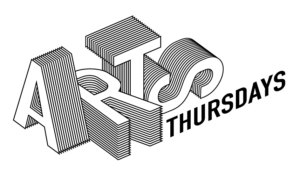
Pier Vittorio Aureli, “The Longhouse”
A recording of this event is available with audio description .
Event Description
The lecture presents Dogma’s research of the longhouse, the linear, long, and narrow habitation typology that existed and still exists in many parts of the world, including South-East Asia, Europe, and North America. While there are numerous scholarly investigations of specific cases of longhouses, a comparative study of this ubiquitous type of habitation is missing. This lacuna is both surprising and understandable. It is surprising because the longhouse is among the most ubiquitous forms of pre-modern dwellings. Alternatively, it is comprehensible because the longhouse represents a type of habitation whose form, materiality, inhabitation and especially building techniques are at odds with modern domesticity. Unlike dominant forms of domesticity that reinforce private property and the nuclear family, longhouses were instead communal structures that could house an extended family, kin group or entire community under one roof. Longhouses often blurred the distinction between the sacred and profane, public, and private, residence and workplace. We have to be careful to not romanticize – or worse fetishize – the longhouse, but its many declensions throughout many parts of the world inevitably challenges many contemporary assumptions about domestic space and its history.
Speaker
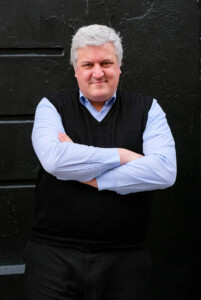
Pier Vittorio Aureli (Rome, 1973) is an architect and educator. He studied at the Istituto di Architettura di Venezia (IUAV) and later at the Berlage Institute and TU Delft where he earned his PhD. Aureli currently teaches at the École Polytechnique Fédérale de Lausanne where he directs the Laboratory Theory and Project of Domestic Space . Together with Martino Tattara, he is the co-founder of Dogma, an office for architecture based in Brussels. Dogma has developed a specific interest in large-scale interventions, urban research, and especially domestic space and its potential for transformation. Aureli has published many essays and several books, such as The Possibility of an Absolute Architecture (2011), Living and Working (with Dogma, 2022) and Architecture and Abstraction (2023). He is currently working on an anthology of Manfredo Tafuri’s writings.
Carceral Landscapes
Event Description
Imprisonment, quite literally, is all around us. The American criminal legal system, especially as it disproportionately incapacitates Black and Brown communities, forms a landscape of retribution and inequity. Carceral Landscapes focuses on the network of prisons, jails, detention centers, and their attendant infrastructure that comprises the backbone of the United States legal system. This symposium aims to expand conversations on the criminal legal system beyond law and police, centering the pivotal—though often unacknowledged—role of design in the construction of carceral facilities that surround us today.
Schedule
Thursday, October 12, 6:30 – 8:30 PM
Stubbins Room (Gund 112)Reading Carceral Architectures Workshop
*Workshop open to Harvard students only.
Please sign up using the google form.
From the aesthetics of jail and prison buildings and their cell blocks to the shifting politics of urban form as cities negotiate the construction of courtrooms and negotiations of police budgets, to the regional rural networks that are shaped by the dislocation of people to detention centers and penitentiaries, the effects of incarceration reverberate across multiple geographic scales. This workshop invites students to “read” for evidence of architecture in carceral spaces as experienced by those imprisoned. We will work with prison writing archives to collate spatial conditions within jails and prisons, developing an editorial position to bring authors’ voices into conversation with designers. In teams, students will collaborate to unveil carceral landscapes of thresholds, materials, and climates. Students will have an opportunity to present this work as part of the public symposium the following day.
Friday, October 13, 1:00 PM
Piper Auditorium
Symposium
1:00 PM Opening Remarks by Lisa Haber-Thomson
1:30 PM Presentation by Sarah Lopez, “Points Along a Migrant’s Path: Mapping Imprisonment & Shelter in Texas”
1:50 PM Presentation by Melanie Newport, “A Bigger, Better Jail: Jail Overcrowding and the Making of Boundless Carceral Space in Chicago”
2:10 PM Presentation by Andrew Manuel Crespo, “Carceral Infrastructure and Prison Abolition: How Building Community, Not Prisons, Can End Mass Incarceration”
2:30 PM Reading Carceral Architectures workshop presentations
2:45 – 3:00 PM Break
3:00-4:15 Round-table discussion moderated by Ana María Leon Crespo
4:30 PM Closing Remarks by Dana McKinney White
Organized by Lisa Haber-Thomson and Dana McKinney White.
This program is co-sponsored by the Institute to End Mass Incarceration at the Harvard Law School.
Speakers
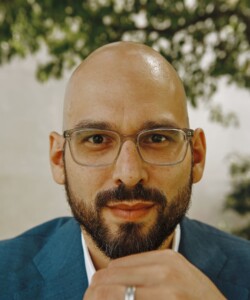
Andrew Manuel Crespo is the Morris Wasserstein Public Interest Professor of Law at Harvard Law School, a founding editor of Inquest, and the Executive Faculty Director of the Institute to End Mass Incarceration. A national expert on criminal law and policy, his scholarship and public writings examine how the power structures and legal frameworks of the American penal system combine to produce the systems of carceral harm and oppression known as mass incarceration. Prior to joining the legal academy, Professor Crespo served as a trial attorney with the Public Defender Service for the District of Columbia, where he represented over one hundred clients facing criminal charges. Before that, he worked for three years as a law clerk, including two years at the U.S. Supreme Court, where he clerked for Justices Stephen Breyer and Elena Kagan. As a student at Harvard Law School in 2007, Crespo was the first Latino elected to serve as presidentof the Harvard Law Review. He returned to Harvard as a professor in 2015 and, in 2019, becamethe first Latino promoted to a tenured position on the law school faculty.
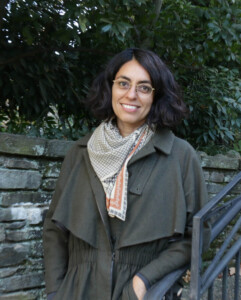
Sarah Lopez is an Associate Professor at the University of Pennsylvania in the Stuart Weitzman School of Design. Lopez is a built environment historian of 20th-century Mexico and the United States whose research focuses on material histories of migration, remittance development and landscapes, and migrant incarceration. She is interested in experimental historical methods, ordinary landscapes, and environmental humanities. Lopez’ book, The Remittance Landscape: The Spaces of Migration in Rural Mexico and Urban USA , won the 2017 Spiro Kostof Book Award from the Society of Architectural Historians.

Melanie Newport is an associate professor of history at the University of Connecticut. She teaches at the Hartford campus.
Melanie is author of the book, This Is My Jail: Local Politics and the Rise of Mass Incarceration , out now with University of Pennsylvania Press. As a sweeping history of Cook County Jail in Chicago, This Is My Jail foregrounds the role of jailed people in contesting and constraining mass incarceration. This Is My Jail won the Sharon Harris Book Award from the University of Connecticut Humanities Institute.
As an interdisciplinary scholar of recent American politics and carcerality, her most recent research on disaster and incarceration in the 20th and 21st century builds on her interest in the liminal spaces of the carceral state. Her research has been supported by the University of Connecticut Humanities Institute, University of Illinois at Chicago Libraries, Black Metropolis Research Consortium, the University of Chicago, and the Center for the Humanities at Temple.
Melanie is a Series Editor with the Chicago Visions and Revisions series at the University of Chicago Press, where she acquires Chicago-related trade books in criminal justice, sociology, and history. She holds a PhD from Temple University.

Anita Berrizbeitia, “The Blue Hills: Charles Eliot’s Design Experiment (1893-1897)”
A recording of this event is available with audio description .
Event Description
This lecture explores how developments in the earth sciences—specifically geology, evolutionism, and biogeography—ushered in advances in design methodologies for large public–realm landscapes in late nineteenth-century Boston.
In my earlier work on Charles Eliot’s Metropolitan Park System of 1892, I argued that geology had provided a framework for re-envisioning what had become a fragmented territory as a unified whole. Eliot proposed the region’s formative processes and the thick and unseen strata underlying the visible and varied topography in and around Boston as the foundation for a new political geography for a rapidly expanding city. For the Blue Hills, the largest of the reservations of the park system, Eliot turns his attention to the surface, proposed as a mantle of vegetation that drapes over the hills’ granitic foundation. Eliot introduces methods of biogeography to fieldwork, of forestry and conservation, and of what today we call restoration ecology. However, Eliot also prompts us to reconsider the role of the wild and wilderness, and of aesthetics in relationship to a growing public. Rather than being the product of a singular or unified framework, his proposal shows us the intertwining of multiple design methods and ways of knowing that join notions of the “wild” and of the “urban.”
Speaker
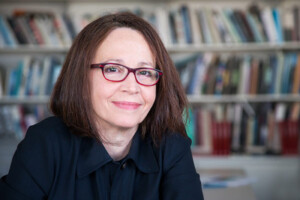
Anita Berrizbeitia is a Professor of Landscape Architecture at the Harvard Graduate School of Design. She served as Chair of the Department of Landscape Architecture between 2015-2022 and as Program Director of the Master in Landscape Architecture Degree Programs between 2012-2015. Her research explores nineteenth and twentieth-century public realm landscapes, with interests in material culture, urban political ecology, and the productive functions of landscapes in processes of urbanization and climate adaptation. Her research on Latin American cities and landscapes focuses, in addition, on the role of large-scale infrastructural projects on territorial organization, climate adaptation, and on the interface between landscape and emerging urbanization.
A licensed landscape architect, she has worked on a broad range of projects and competitions, including urban design, campus planning, public parks, and residential gardens. She is a consultant for national and international landscape architectural firms and has served on juries of multiple design competitions in the US and abroad, including Chair of the Jury of the Rome Prize at the American Academy in Rome, and design competitions in Chile, Ecuador, Argentina, Spain, and the Middle East. At Harvard, she serves on the university’s Design Review Board, the Harvard University Committee on the Arts and the Radcliffe Institute Public Art Competition. She serves on the editorial board of the Journal of Landscape Architecture (JoLA). Before joining the GSD in 2009 she was a faculty member at the University of Pennsylvania.
At the GSD she has taught core Landscape Architecture studios and core Urban Design studios. Her option studios have focused on urban and territorial scale infrastructures, on emergent urbanization, and climate adaptation. She has also taught design theory in both the core and elective curricula.
Berrizbeitia is editor of Urban Landscape—Critical Concepts in Built Environment Series; editor of Michael Van Valkenburgh Associates: Reconstructing Urban Landscapes (Yale University Press), which received an ASLA Honor Award; author of Roberto Burle Marx in Caracas: Parque del Este, 1956–1961 (Penn Press), awarded the inaugural J.B. Jackson Book Prize in 2007 from the Foundation for Landscape Studies; and co-author with Linda Pollak of Inside/Outside: Between Architecture and Landscape, which won an ASLA Merit Award. Her essays have been published widely in journals and anthologies, including the Journal of Landscape Architecture (JoLA); Studies in the History of Gardens & Designed Landscapes; Center for Advanced Studies in the Visual Arts (National Gallery of Art); Cultural History of Gardens (Berg Publishers); Sao Paolo: A Graphic Biography (University of Texas Press), Cerros Islas Santiago (Fundación Cerros Islas); Recovering Landscape (Princeton Architectural Press); CASE: Downsview Park Toronto (Prestel); Large Parks (Princeton Architectural Press); and Retorno al Paisaje (Evren) among others. With Diane Davis, she co-edited Harvard Design Magazine 49: Publics (2021).
Berrizbeitia received a BA from Wellesley College in Studio Art and an MLA from the GSD. She was awarded the Prince Charitable Trusts Rome Prize Fellowship at the American Academy in Rome in 2006.
Black in Design 2023: The Black Home
Event Description
The Black in Design conference, organized by the Harvard Graduate School of Design African American Student Union (GSD AASU), recognizes the contributions of the African diaspora to the design fields and promotes discourse around the agency of the design professions to address and dismantle the institutional barriers faced by Black communities. The fifth biannual conference, The Black Home, will take place in person September 22 – 24, 2023 at the Harvard Graduate School of Design, Gund Hall, 48 Quincy St, Cambridge, MA 02138.
Yaad, ile, lakay. All languages have a word for home, shelter, a claim to a place, to a delineated territory of heritage. However, the experience of Black people across the world has created a unique yet divergent practice of creating and claiming home. This year’s Black in Design conference explores the Black home’s multidimensionality — as a literal structure that shelters, as a reflection of culture and traditions, and as spaces that are not entirely physical. The conference brings together keynote panels, workshops, and conversations that discuss and expand these themes with different thought leaders involved in designing and creating various interpretations of Black homes. The goal is to establish a broader understanding and alternate ways of experiencing the Black home in an effort to reinforce the ideals of Black communities living across the country and larger diaspora and to help plan for the future.
To purchase tickets and/or learn more about Black in Design 2023, visit the Black in Design website . To stay up to date on speakers, programming, accommodations, and more, subscribe to the Black in Design listserv !

